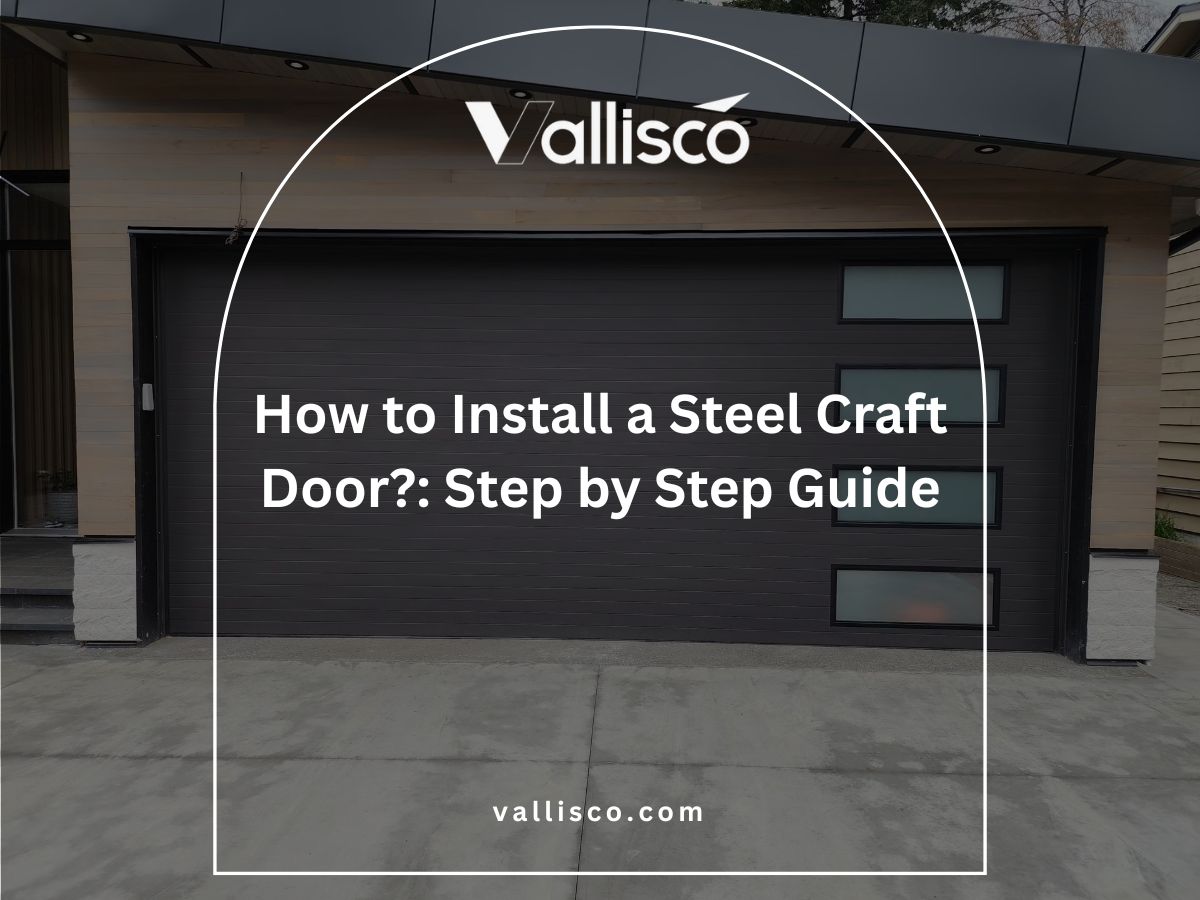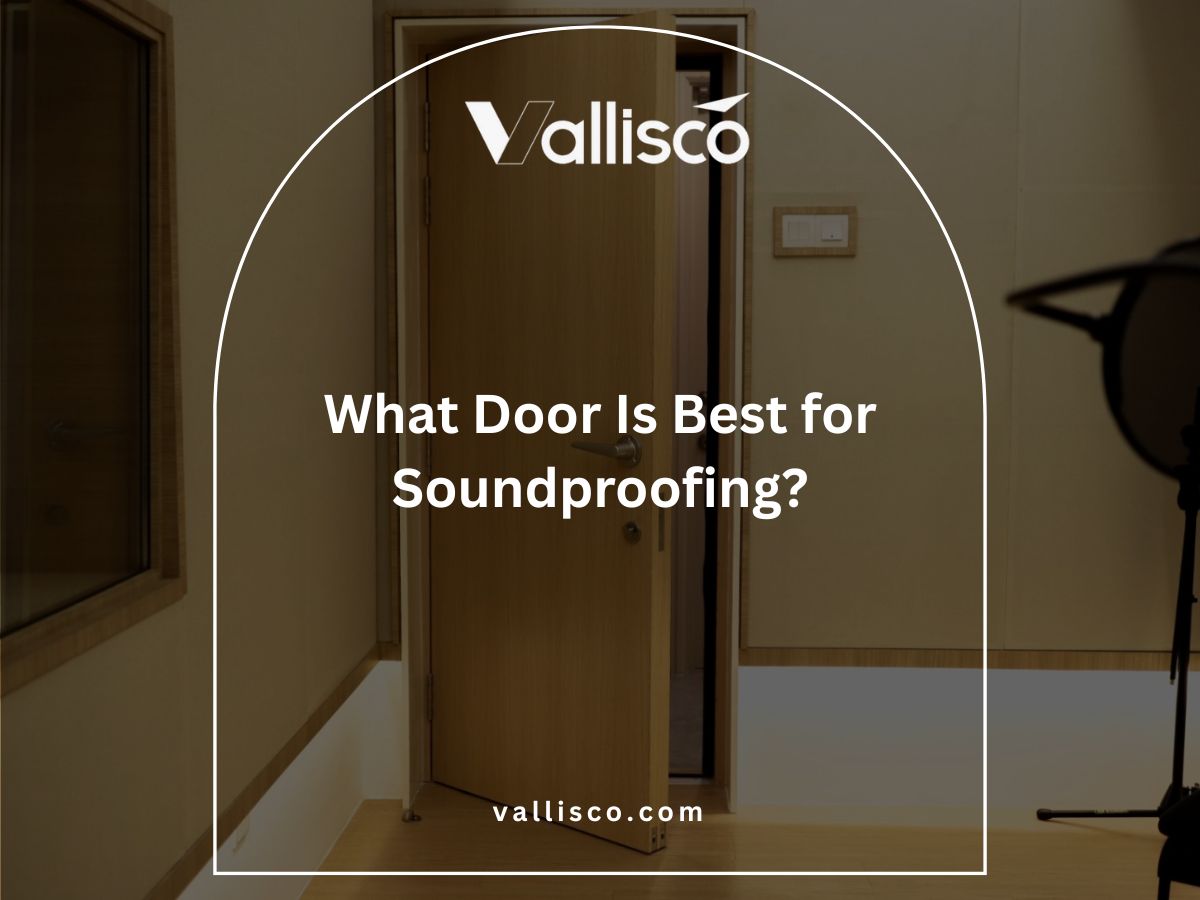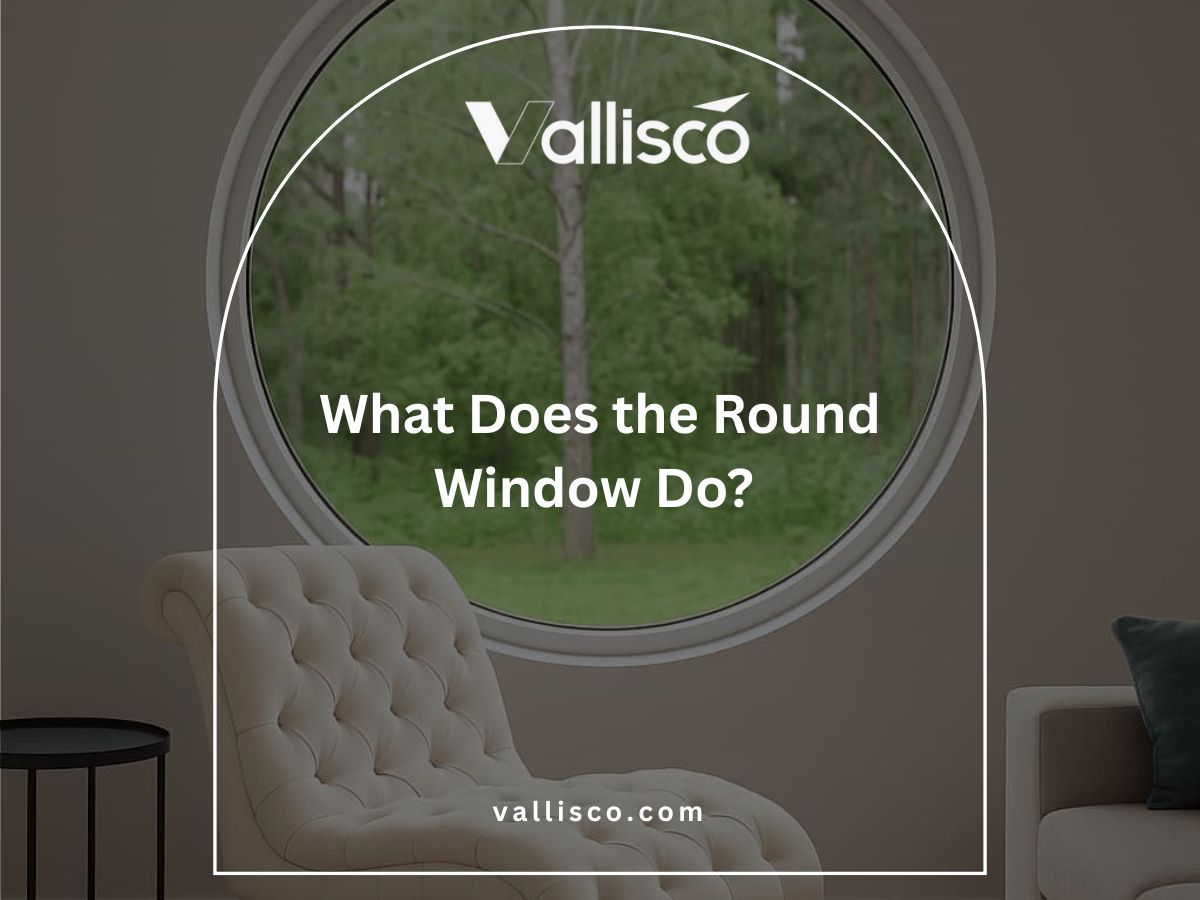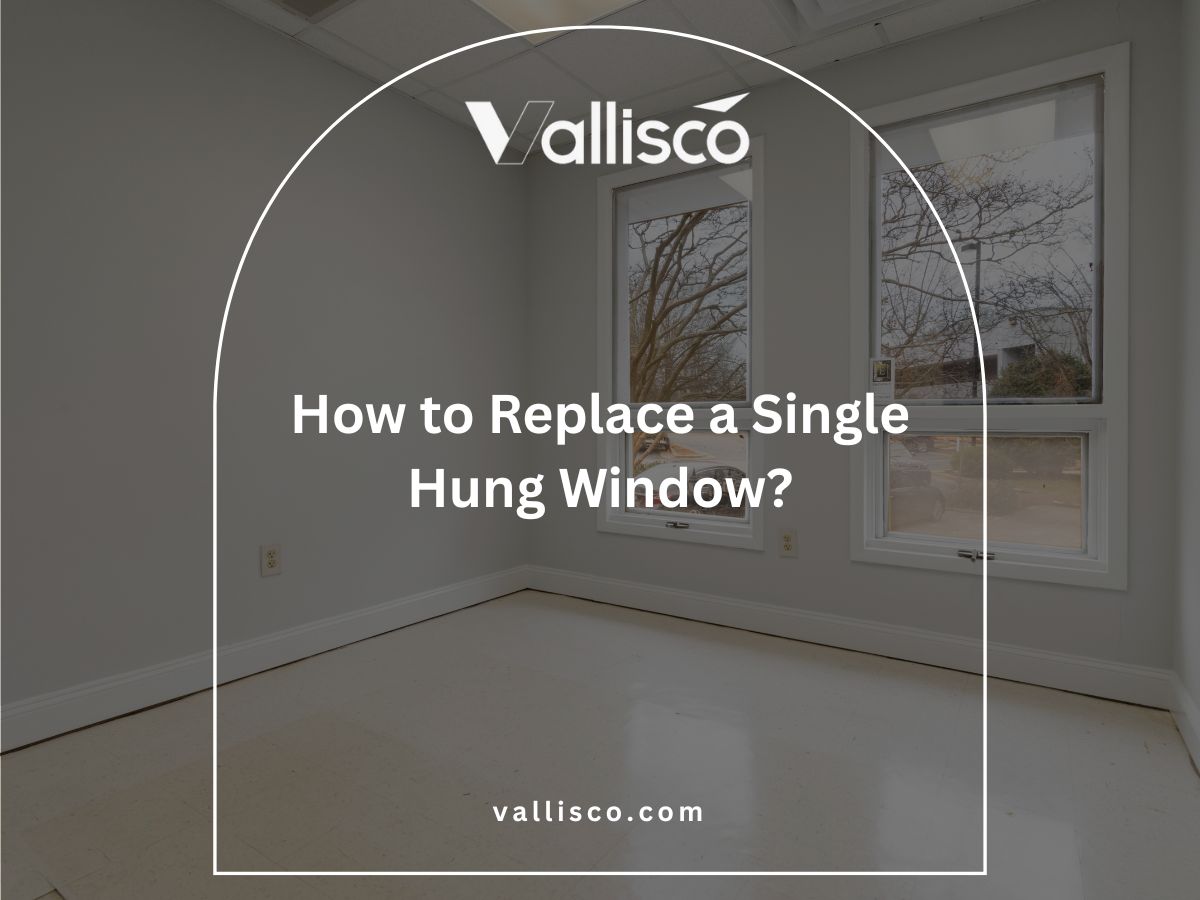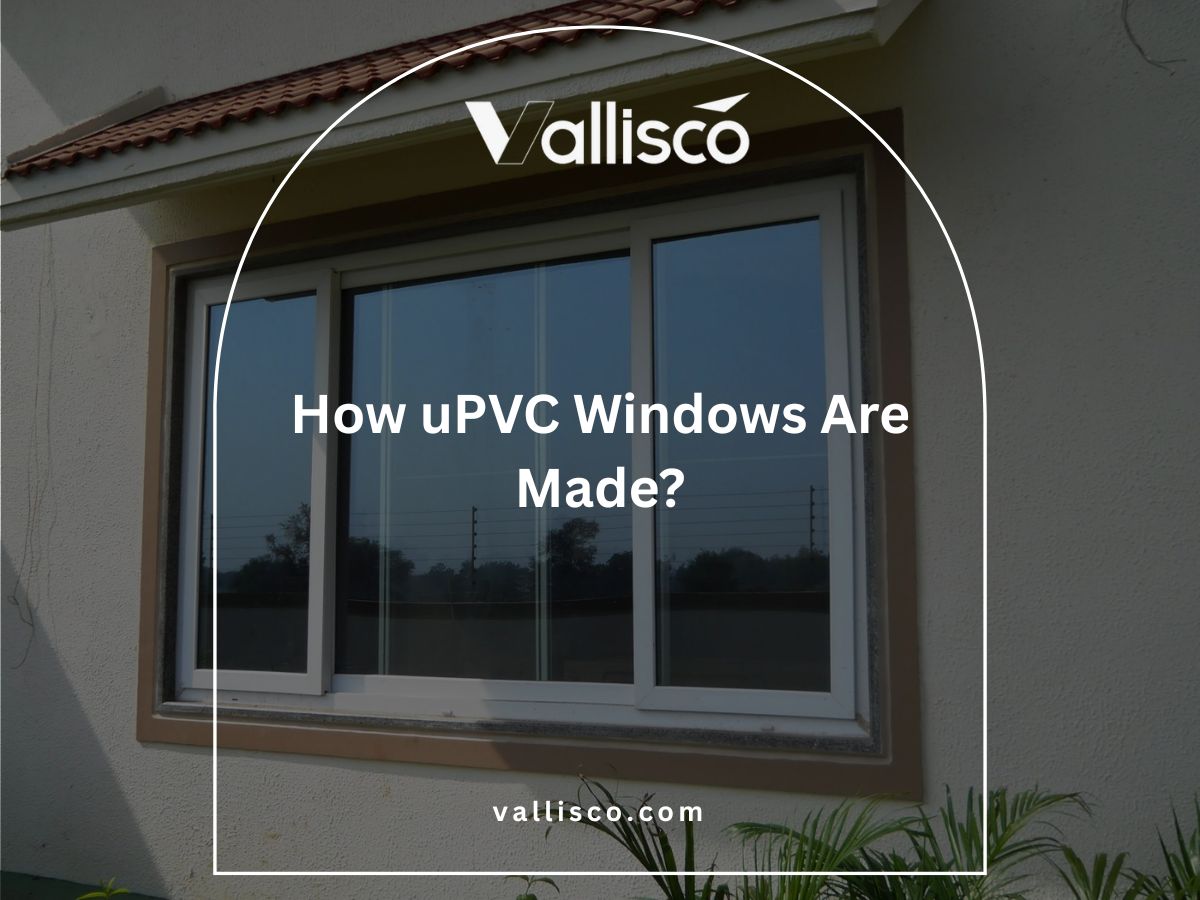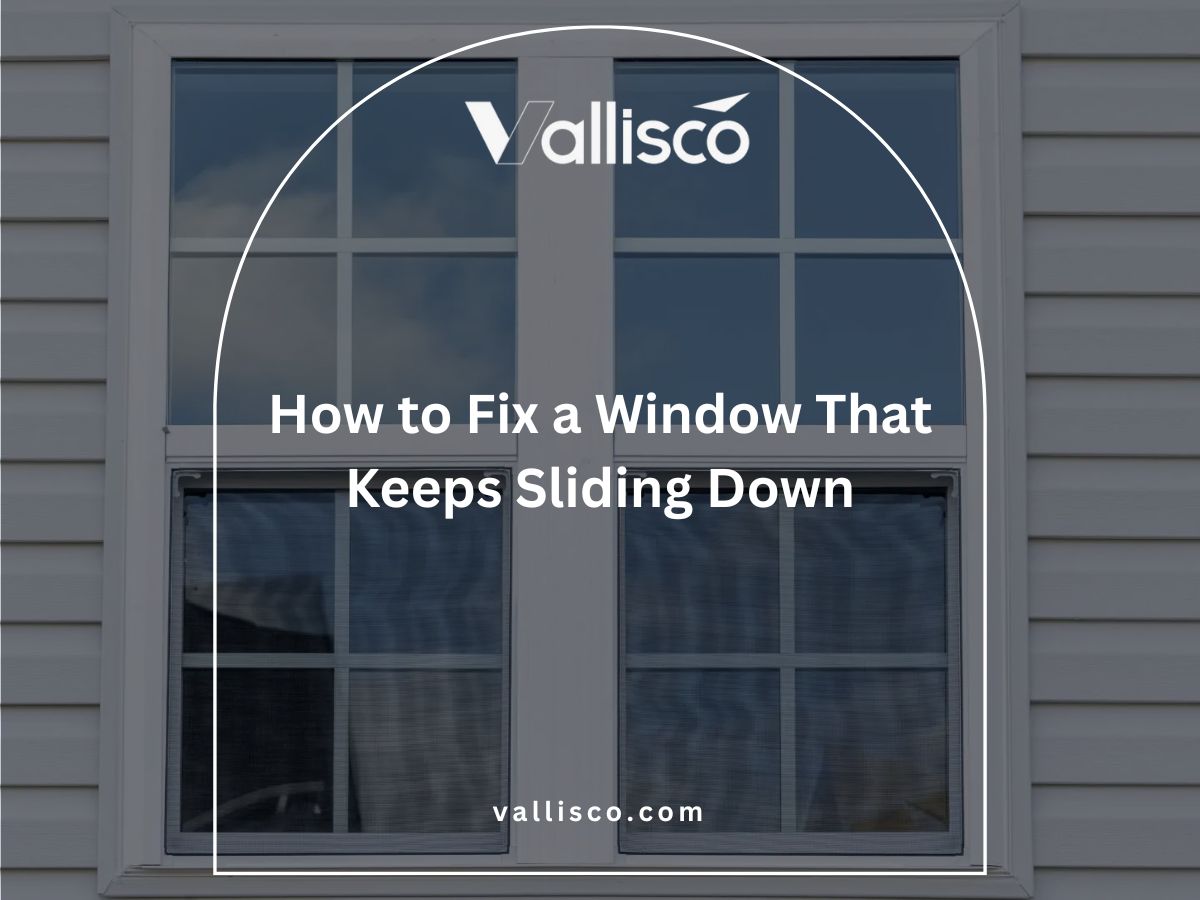I once picked a front door just because it looked nice in a catalog. It had a beautiful wood finish, and I thought it would be perfect for a client’s project. But once it was installed, we realized it didn’t keep out noise, it got too hot in the sun, and honestly, it didn’t suit the building at all.
That was a tough lesson. A front door isn’t just about looks. It affects how your home feels, how it works, and what kind of first impression it makes.
If you’re building a new place or updating an entry, I want to help you avoid the same mistake I made.
This article shares 8 front door designs that I’ve seen work in real homes and buildings. You’ll learn what each one does best, where it fits, and what to think about before choosing.
By the end, you’ll have clear, useful ideas to help you pick a door that works for your space and feels right every time you walk through it.
So let’s get started!
Quick Comparison Chart
Before we dig into the full details of each front door design, here’s a quick side-by-side look. This table will help you spot the one that feels right and avoid choices that won’t fit your needs.
| Door Style | Best For | Key Look | Top Benefits | Watch Outs |
| Modern Flush Door | Modern homes, apartments, greenhouses | Flat, smooth, minimal | Easy to clean, pairs with smart locks, sleek and quiet | Can feel too plain, may lack insulation in hollow-core versions |
| Classic Panelled Wooden Door | Traditional homes, villas, small hotels | Raised/recessed wood panels | Warm, long-lasting, easy to stain or paint | Needs sealing, heavy to hang and maintain |
| Glass & Metal Frame Door | Greenhouses, urban homes, garden entries | Metal-framed glass with clear panels | Brings in light, feels open, works well with mixed materials | Can show smudges, needs insulation in colder areas |
| Double French Doors | Wide entries, garden views, formal homes | Twin doors with glass panes | Adds light, opens wide, looks elegant | Needs swing space, may allow drafts if unsealed |
| Arched Top w/ Iron Detailing | Villas, Mediterranean or Spanish builds | Curved wood with iron scrollwork | Bold, secure, full of character | Heavy and custom, adds cost and needs structural prep |
| Pivot Door | Luxury homes, bold architecture | Oversized, center-rotating panel | Smooth movement, supports large sizes, no visible hardware | Needs wind control, sealing can be tricky |
| Cottage Vertical Plank Door | Rural homes, garden houses, cozy inns | Narrow planks, often rustic finish | Friendly feel, easy to repair, works with natural settings | Needs sealing, hinges may rust in moist environments |
| Smart Entry w/ Hidden Hardware | Modern villas, tech-forward properties | Flat surface, no visible locks | Keyless entry, clean finish, remote access | Needs backup during outages, sun can wear down digital panels |
Now that you’ve got the big picture, let’s explore each design and see which one really fits your needs.
1. Modern Flush Door
A modern flush door has a flat, smooth surface with no raised panels or decorative detailing. It is usually made from materials like solid wood, plywood, or medium-density fiberboard (MDF), often covered with a thin layer of veneer or laminate for a clean finish. Some flush doors are hollow-core, which makes them lightweight and affordable, while others are solid-core for better strength and insulation.
Where It Works Best
- Modern Homes and Villas: This door style fits perfectly in homes with clean lines, large windows, and minimal decoration. It complements modern and industrial architecture without standing out too much.
- Apartments and Compact Spaces: Because it doesn’t have bulky detailing, a flush door saves space and gives narrow entryways a clean look. It also suits interiors with limited natural light by keeping the space visually open.
- Greenhouses and Transitional Spaces: Flush doors work well as simple dividers between living areas and garden zones. They create a seamless flow without drawing attention away from glass or greenery.
Key Benefits
- Easy to Clean and Maintain: The flat surface means there are no grooves or edges for dust to collect. A soft cloth or sponge is all you need for regular upkeep.
- Pairs Well with Smart Technology: Flush doors support features like fingerprint locks and keypads. Their simple design makes modern tech look built-in.
- Customizable Appearance: You can paint them in any color, match them to the wall, or add subtle grooves if needed. This gives you more freedom without changing the structure.
What to Watch Out For
I once recommended a hollow-core flush door for a friend’s small guest house, thinking it would be a budget-friendly win. But the first time we stood near it during a windstorm, the rattling made it feel flimsy and unfinished. It looked great but it didn’t feel secure, especially at night. That experience reminded me that design and comfort have to go hand in hand.
Another thing I’ve noticed is how out of place these doors can look in homes with heavy trim or classic moldings. In one renovation, we tried pairing flush doors with an older entry style, and it just didn’t match. The flat surface clashed with everything else, and the door ended up feeling like a temporary fix instead of a finished feature. So if your home leans traditional, this may not be the best fit.
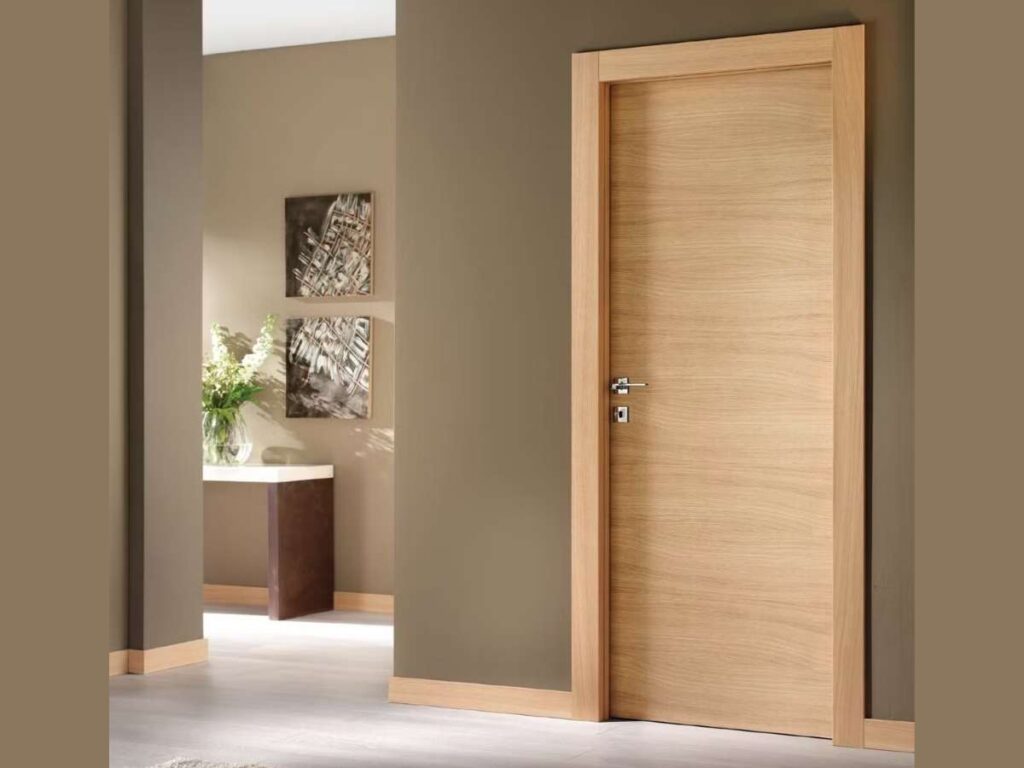
2. Classic Panelled Wooden Door
A classic panelled wooden door has a solid wood structure with raised or recessed rectangular patterns, often arranged in 2, 4, or 6-panel layouts. The design gives the door a strong, structured look while adding visual depth. It’s usually made from hardwoods like oak, teak, or mahogany and can be painted or stained to match your exterior.
Where It Works Best
- Traditional Homes and Villas: The detailed panels give structure and weight, which suits homes with columns, moldings, or classic rooflines. They help complete the overall design.
- Countryside and Colonial Styles: These doors match perfectly with brick, stone, or wood siding and help create a strong first impression that feels welcoming.
- Hotels, B&Bs, or Guesthouses: If your entry needs to feel warm and solid, a panelled wooden door brings a sense of quality and comfort to visitors.
Key Benefits
- Strong and Durable Build: Solid hardwood construction gives the door a heavy, sturdy feel. It can last for years with proper care.
- Warm and Timeless Look: The natural grain and depth from the panels create a design that never really goes out of style.
- Flexible with Finishes: You can stain the wood to bring out rich color, or paint it to match trim, shutters, or walls.
What to Watch Out For
On a hotel project I worked on, we used solid wood panelled doors at the guest entrances. After a few months of direct sun and salt air, the finish started fading, and cracks appeared near the edges. The team had to recoat and seal the doors earlier than expected.
These doors are also heavy. If the frame or hinges aren’t strong enough, they may start to sag or drag over time. I’ve seen this happen in villa entries where the structure wasn’t reinforced properly.
3. Glass & Metal Frame Door
A glass and metal frame door combines large glass panels with a strong metal border, usually made of aluminum or steel. The frame may be painted black, bronze, or silver, and the glass can be clear, frosted, or tinted depending on how much light and privacy you want. Some styles use a grid layout, breaking the glass into smaller sections, while others use full-length glass for a more open look.
Where It Works Best
- Urban Homes and Greenhouses: These doors feel light and modern, which works well in homes with exposed materials or glass-heavy spaces like sunrooms and greenhouses. The glass allows natural light to flow through, keeping the space bright.
- Modern Villas or Lofts: The sleek frame and clean lines pair well with open floor plans and concrete or steel details. This style fits especially well in properties with a modern or industrial edge.
- Garden-Facing Entrances: If your entry looks out onto a courtyard, patio, or landscaped area, this door can help create a strong visual connection between indoors and outdoors.
Key Benefits
- Lets in Natural Light: The large glass surface brightens your space, which can make small or dark areas feel bigger. It’s especially useful for north-facing entries or shaded porches.
- Pairs Easily with Other Materials: This door can look good next to stone, brick, or wood. It gives flexibility if you want to mix textures.
- Modern and Simple Appearance: The clean look of glass and metal feels current but doesn’t overpower other design elements. It often becomes a quiet focal point.
What to Watch Out For
I helped install this door style for a home with a narrow side garden. The views were great, but the glass needed constant cleaning because every touch left a mark. Over time, it became part of the daily routine.
Another project had issues during winter. The door looked beautiful, but the single-pane glass let in cold drafts. After upgrading to double-glazed glass, the comfort level improved right away. If you’re working in a colder area, better insulation is something to think about early on.
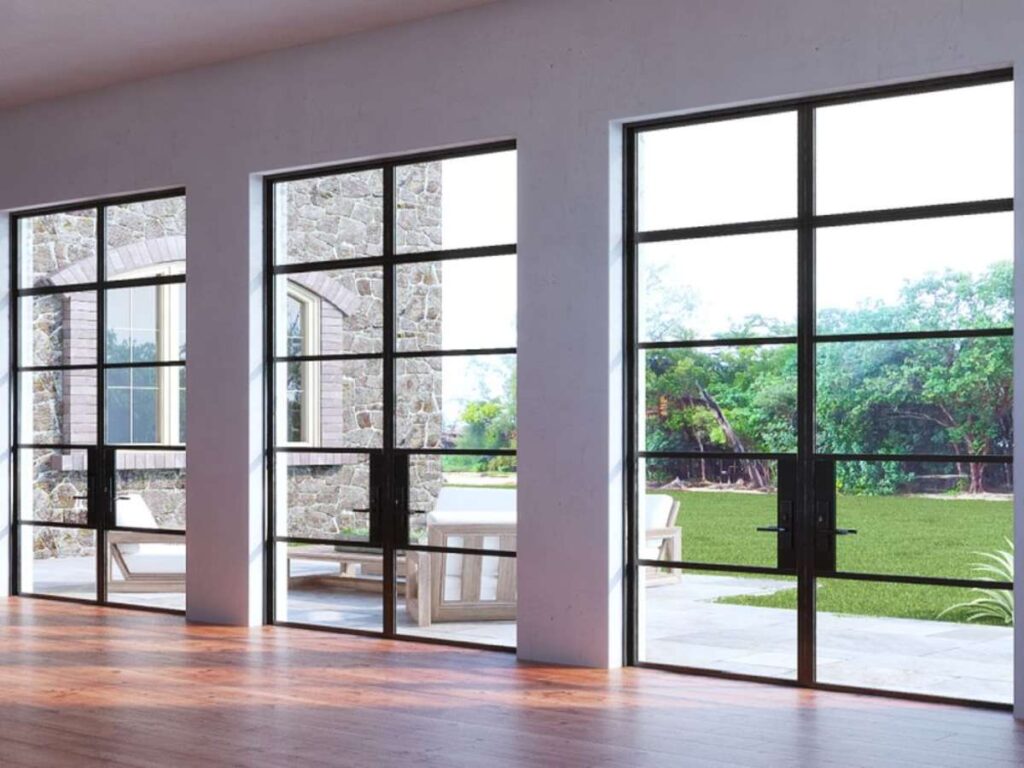
4. Double French Doors
Double French doors are made of two matching doors that open outward or inward from the center. Each door typically has multiple glass panes divided by thin frames, often called “muntins.” The overall look feels light, balanced, and open, making it a popular choice for spaces that connect to gardens, patios, or wide porches.
Where It Works Best
- Homes with Outdoor Access: If your front door opens onto a patio, porch, or courtyard, French doors help create a soft transition between the inside and outside. They also work well in homes that focus on natural views.
- Traditional or Mediterranean Villas: The classic look fits well with homes that have stone, tile, or stucco finishes. French doors match this style without feeling out of place.
- Guest Entrances in Courtyard Layouts: In homes with side or center gardens, these doors can frame the space beautifully and bring in more light at the same time.
Key Benefits
- Bright and Airy Feel: The glass panes allow sunlight to pour into the entry, making the space feel larger and more open. They’re especially useful in homes with darker interiors.
- Welcoming Look: French doors feel open and inviting. When both sides are opened, the space feels wide and easy to move through.
- Flexible Design Style: These doors can be finished in wood, metal, or painted colors. They also work with both classic and modern homes depending on the frame and hardware.
What to Watch Out For
On one project, we installed French doors facing a large front garden. The view was beautiful, but the inward swing took up space inside the hallway. We ended up changing the layout to prevent furniture from blocking the door.
Another challenge came with sealing. If the doors aren’t installed properly, wind and rain can leak through the middle or bottom. In one coastal home, we had to add extra weather stripping after the first storm rolled through. It’s a good idea to test the seal early, especially if the doors face open air.
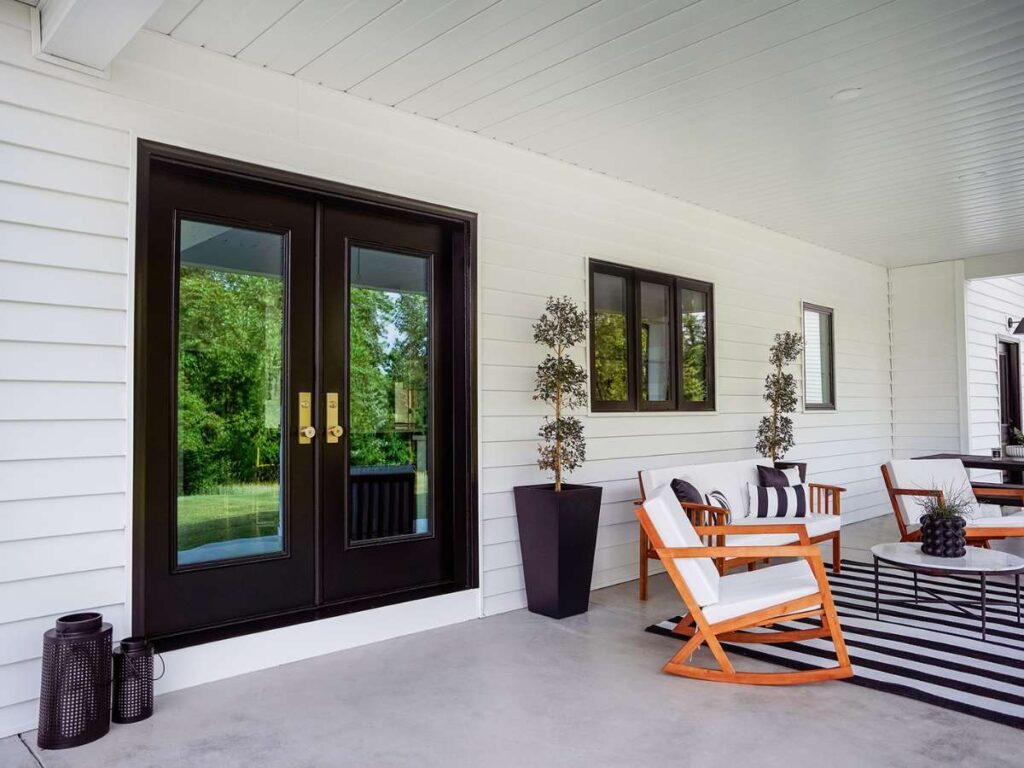
5. Arched Top Door With Iron Detailing
An arched top door with iron detailing has a curved top edge rather than a flat one, giving it a more decorative and formal shape. These doors are often made from heavy wood like mahogany or walnut, with forged iron accents such as scrollwork, hinges, or a small “speakeasy” window. The look is bold and traditional, adding personality and weight to any front entry.
Where It Works Best
- Mediterranean or Spanish-Style Villas: These doors blend well with clay tile roofs, stucco walls, and wrought iron balconies. They add depth and character to homes with warm, rustic tones.
- Large Entryways With Arched Frames: If your doorway already has a curved top or stone arch, this style brings everything together. It makes the entrance feel intentional and complete.
- Properties With Strong First-Impression Focus: If you want your front entry to feel dramatic and inviting, this door stands out immediately. It works especially well on long walkways or gated entries.
Key Benefits
- Adds Charm and Architectural Interest: The curved shape and iron accents create a strong visual statement. It feels different from standard square or flat-top doors.
- Durable and Long-Lasting Materials: The combination of hardwood and wrought iron holds up well over time. It’s a solid choice for those who want lasting materials.
- Flexible Styling With Natural or Dark Finishes: You can stain the wood to show its grain or go darker for a more formal look. The iron details can also be painted or left raw for a weathered feel.
What to Watch Out For
One project I worked on had these doors installed in a vacation villa. The result was stunning, but the door weighed so much that it needed upgraded hinges after just a few months. If you’re using this style, it’s important to build in extra support from the start.
Another issue came up with the curve itself. We had to custom-build the frame, which added time and cost. It’s not something you can usually buy off the shelf, so make sure your timeline and budget account for those extra details.
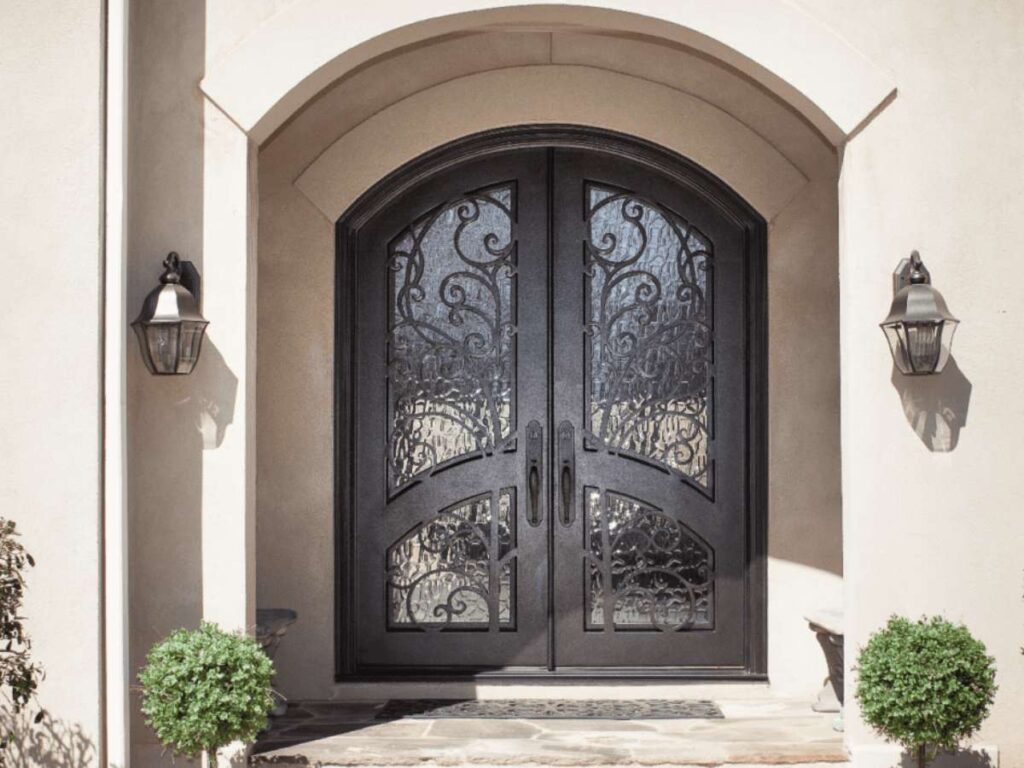
6. Pivot Door
A pivot door is a large door that rotates on a vertical axis, rather than swinging on side hinges. It uses a hidden pivot point at the top and bottom of the door, often set several inches in from the edge, allowing the door to rotate smoothly. These doors are usually oversized, with a clean, flat surface, and they create a bold, modern feel the moment you open them.
Where It Works Best
- Modern Villas or Luxury Homes: Pivot doors match perfectly with bold architecture and large, open facades. They help create a strong, eye-catching entrance right from the street.
- Wide Entryways With Ample Space: Because they swing in both directions and need room to operate, they work best in spaces with extra clearance inside and out.
- Projects Focused on Visual Impact: If your goal is to create a statement without adding unnecessary decoration, this door style keeps things clean but still draws attention.
Key Benefits
- Smooth and Impressive Movement: The rotation feels unique and balanced. Many people find the way it opens surprisingly pleasant, especially in large entry areas.
- Minimalist Look With No Visible Hinges: The pivot mechanism is hidden, so the door appears to float. This keeps the design clean and distraction-free.
- Can Handle Large, Heavy Panels: Pivot hardware is designed to hold more weight. That means you can choose taller or wider doors without worrying about standard limits.
What to Watch Out For
In one villa project, the wind became a problem. The door caught a strong draft and swung too far, which was risky near furniture and open hallways. We had to install a soft-close system and adjust the pivot tension to prevent future issues.
Another challenge showed up in a hotel lobby with high humidity. The pivot door looked beautiful, but it didn’t seal tightly at the corners. Moisture started creeping in, and guests noticed the draft. For buildings exposed to strong weather, extra planning around sealing and drainage can make a big difference.
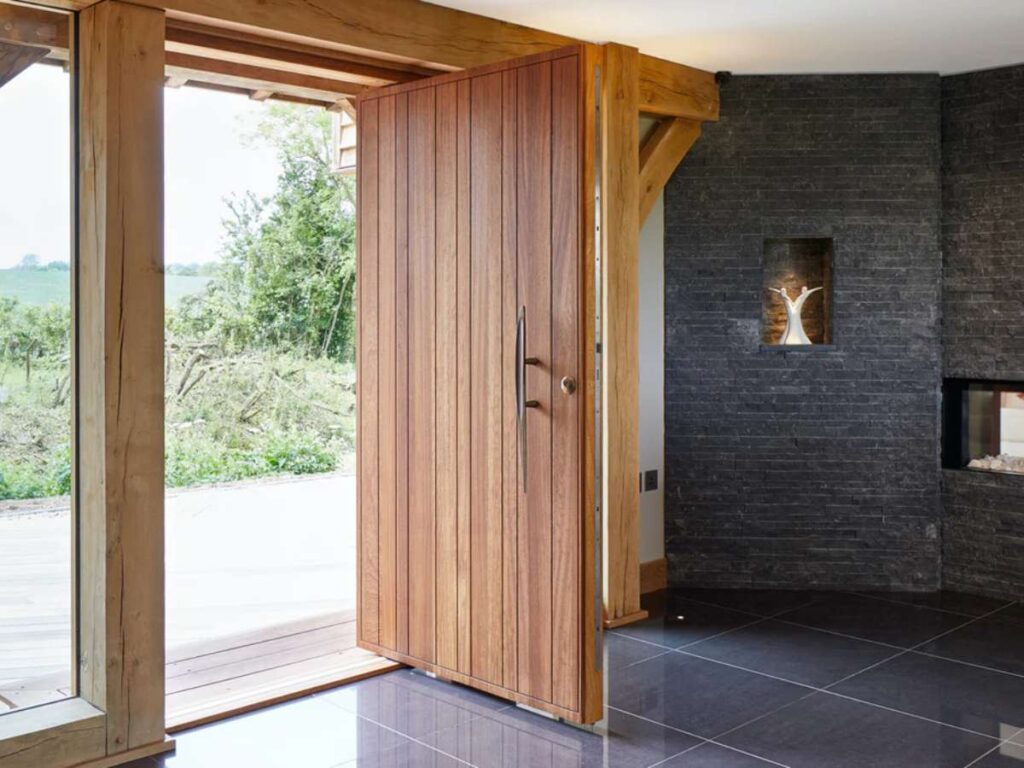
7. Cottage-Style Vertical Plank Door
A cottage-style vertical plank door is made of several narrow wooden boards placed side by side, often with visible grain and a rustic texture. It may include horizontal or diagonal cross-braces and sometimes a small square or round window near the top. The design feels handmade and casual, bringing a warm and familiar feel to homes and entryways.
Where It Works Best
- Countryside Homes and Farm Villas: This door blends naturally with rural surroundings. It pairs well with brick, stone, or wood siding and looks great near gardens or pathways.
- Inns or Guest Lodges With a Cozy Feel: When comfort and simplicity are key, this design helps visitors feel at ease from the moment they arrive. The look feels handmade and personal.
- Greenhouses or Garden Entrances: These doors work well as side entries too. Their lightweight design and casual finish complement outdoor spaces and planting zones.
Key Benefits
- Warm and Welcoming Style: The vertical planks add texture without feeling overdone. They send the message that your space is relaxed and thoughtful.
- Good Match for Natural Materials: This door fits easily into projects that use stone, brick, or natural wood. It works best when everything feels tied to the environment.
- Easy to Repair or Replace: If one plank gets damaged, it’s often possible to fix just that part. This makes it practical for long-term use in outdoor conditions.
What to Watch Out For
I used this style on a small project that had no covered entry. The first season of rain caused some of the planks to swell, and the door began to stick. We added a rain guard afterward, but it would’ve been smarter to seal the edges before installation.
Another time, we installed this door near the coast. It looked great, but the salt air made the hinges rust faster than we expected. If your location has moisture, it’s a good idea to use stainless steel or weather-treated hardware from the beginning. I’ve found that manufacturers like Vallisco offer pre-treated options and hardware upgrades that help avoid these kinds of issues from the start.
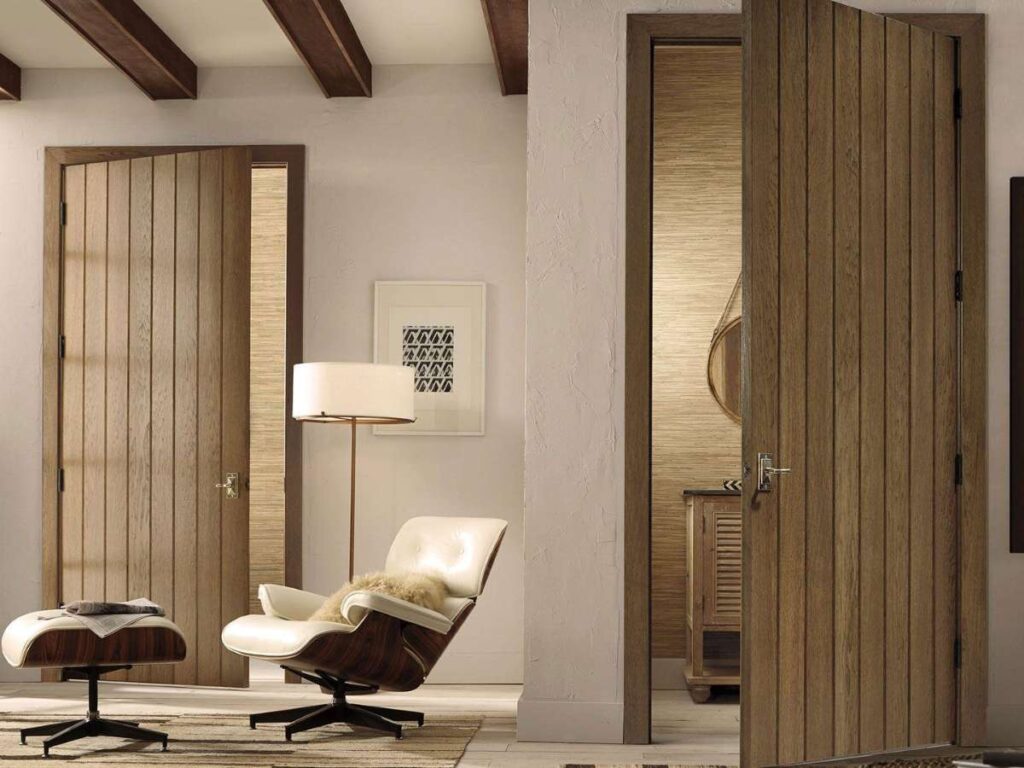
8. Smart Entry Door With Hidden Hardware
A smart entry door with hidden hardware has a flat, minimal surface with no visible knobs, handles, or traditional locks. Access is controlled by built-in technology such as keypads, fingerprint scanners, or app-based entry systems. These doors are often paired with flush finishes and seamless frames to give a clean, modern look from both inside and out.
Where It Works Best
- Modern Villas or New Builds: These doors fit perfectly into sleek, architectural homes that prioritize clean lines and tech-friendly systems. The design blends in instead of standing out.
- Short-Term Rentals or Guest Units: If you need to grant entry to multiple users without giving out physical keys, smart access makes management easier. It can save time and improve safety.
- High-Security Projects or Private Properties: For homes or buildings where privacy and control are top priorities, this setup reduces tampering and unwanted access.
Key Benefits
- Tech-Ready and Key-Free: You can open the door using a code, phone app, or fingerprint. No more digging through pockets or worrying about lost keys.
- Minimal Look With Hidden Features: The lack of visible hardware gives a clean finish that doesn’t interrupt the wall or door surface. It’s great for modern facades or minimalist entryways.
- Control and Monitoring: Many systems let you track entries or unlock the door remotely. This can be especially useful for property managers or multi-user buildings.
What to Watch Out For
We once installed this system for a client who loved the idea of keyless entry. It worked great until a power outage knocked out the Wi-Fi. Thankfully, there was a manual backup key, but it reminded us how important it is to keep those options available.
Another client placed the access panel in direct sunlight. After a few months, the screen began to fade and lag. If you plan to install one of these doors, consider sun exposure and wiring early on to avoid performance issues later.
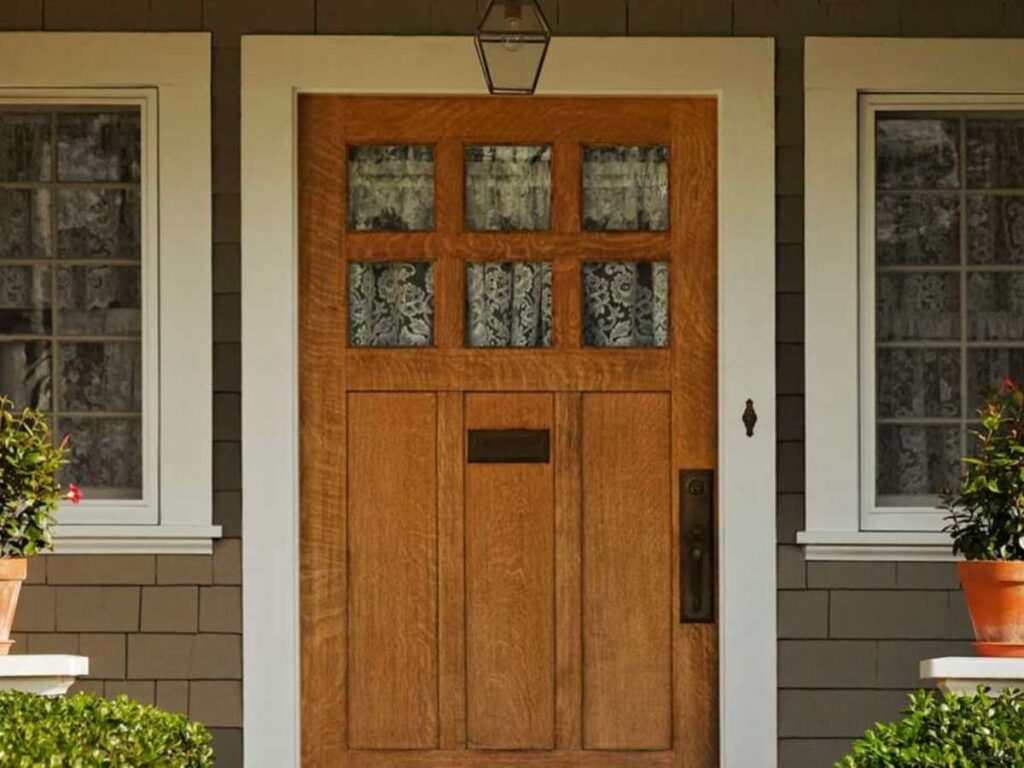
9. 4 Final Tips Before You Choose
Picking a front door sounds simple until you start comparing all the styles, materials, and features. I’ve worked on projects where the wrong door added weeks of delays or caused ongoing issues after installation. You don’t need to go through that.
Here are 4 things to keep in mind before you make your final call:
- Climate Durability: That brand-new finish won’t stay perfect forever. Sun, rain, and daily use will change how the door looks and performs. Ask yourself: will it need regular sealing? Could it warp or fade in your climate? Choose something that still works after a few seasons.
- Architectural Fit: Even great-looking doors can feel out of place if they clash with the building style. If the project is modern, rustic, or traditional stick with a door that supports that feel. Don’t choose in isolation; look at the full entryway.
- Function Over Aesthetics: A front door does more than add curb appeal it’s part of how the building functions. Will it face wind, heavy traffic, or guests with luggage? Design matters, but function should guide the decision.
- Timing Pressure: Timelines get tight, but the front door is one of the most visible and most used parts of a project. If you’re unsure, pause and revisit the overall layout, lighting, and how the door fits into it all. A short delay now can prevent long-term regret.
If you’re looking for a door manufacturer with a solid range of both modern and classic options plus reliable build quality Vallisco is worth considering. I’ve used their products on several builds, and they’ve consistently delivered the look and performance my clients needed. It might be the resource you’re looking for.
Conclusion
I’ve seen projects succeed and fail because of the front door. It’s often overlooked, but it sets the tone for everything beyond it.
Now you have 8 solid design options with practical takeaways. Go back, compare, and see which one fits your vision. The right door isn’t about trend. It’s about balance between looks, use, and setting.
Still unsure? That’s where expert support makes a difference.
Contact us today at Vallisco, your go-to manufacturer for reliable doors and windows.
Recommended Reads for You
Interested in more? Here are some additional articles with insights and tips to keep you informed:
Still haven’t found what you’re looking for? Don’t hesitate to contact us. We’re available around the clock to assist you.


